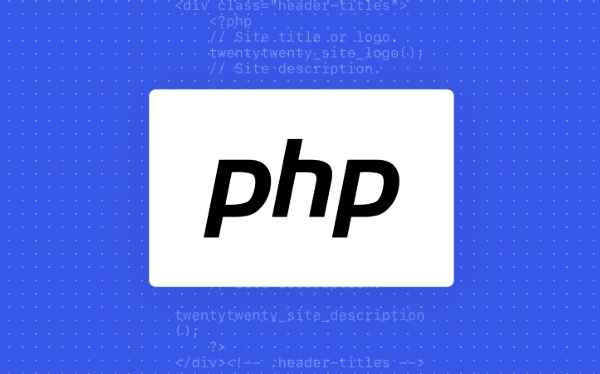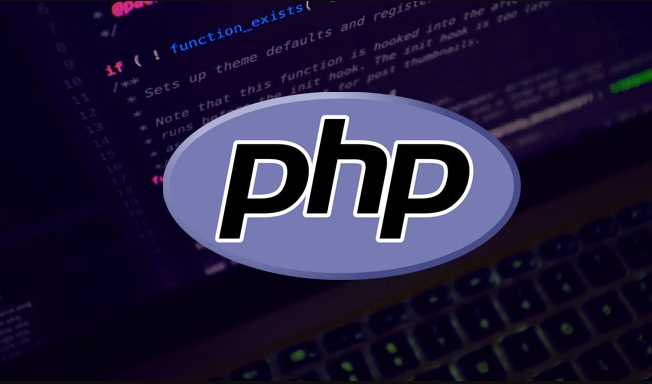The steps to install and configure Apache and PHP are as follows: 1. Install Apache and PHP and related modules through the package manager; 2. Create a test file to verify whether PHP is operating normally; 3. Check and enable the mod_php module, and adjust the MIME type configuration if necessary; 4. Modify the settings in php.ini (such as upload size, memory limit, etc.) according to requirements and restart the service; 5. Pay attention to file permissions, extensions and virtual host configuration. After completing the above steps, Apache can parse and execute PHP files normally.

Apache and PHP are classic combinations, and many websites use them to build dynamic content. If you are new to server configuration, you may find it a bit complicated, but in fact, it is not difficult to solve it by following the steps.

Install Apache and PHP
The first step is to install Apache and PHP. In most Linux distributions, you can complete the installation through the package manager. For example, on Ubuntu, you can use the following command:

- Update the package list:
sudo apt update - Install Apache:
sudo apt install apache2 - Install PHP and commonly used extensions:
sudo apt install php libapache2-mod-php
After the installation is complete, Apache will automatically load the PHP module. You can create a simple PHP file (for example /var/www/html/info.php ), write <?php phpinfo(); ?> , and then visit this file to see if the PHP information page is displayed.
Configure Apache to support PHP
By default, Apache can run PHP after installation, but sometimes you may need to make some adjustments.

Check whether Apache has loaded the mod_php module. You can use the command apachectl -M | grep php to view it. If you don't see output like php_module , it may be that the module is not enabled.
If it is a Debian/Ubuntu system, you can try to enable the module:
- Enable PHP module:
sudo a2enmod php8.x(version number varies according to your installation situation) - Restart Apache:
sudo systemctl restart apache2
Also, make sure that the .php file can be parsed correctly in the root directory of your website. If a download prompt appears instead of execution of accessing the .php file, it means that the MIME type or processor is not configured correctly.
Modify PHP settings (optional)
The main configuration file of PHP is usually /etc/php/版本號(hào)/apache2/php.ini . You can modify some common settings here, such as:
-
upload_max_filesize: Controls the maximum size of uploaded files -
post_max_size: The maximum capacity of POST requests is usually a little larger than the upload limit -
memory_limit: The maximum memory allowed by the script -
display_errors: It can be turned on during development, but it is recommended to close the production environment.
After the modification, don't forget to restart Apache to make the configuration take effect: sudo systemctl restart apache2
Other precautions
- Permissions issue : Make sure your PHP files are placed in a directory where Apache has permission to read, usually
/var/www/html/or your customized virtual host directory. - File extension recognition : If you write
.php5or other extension, Apache will not be executed as PHP by default, so it is best to use.phpin a unified manner. - Virtual Host Configuration : If you use a virtual host, remember to confirm that PHP processing is enabled in the corresponding
<virtualhost></virtualhost>configuration.
Basically that's it. Configuring Apache to run PHP is not too complicated, but some details are easy to ignore, especially module loading and file permissions. When encountering problems, you can look at Apache's error log (usually in /var/log/apache2/error.log ) to find clues.
The above is the detailed content of How to configure Apache server to run PHP?. For more information, please follow other related articles on the PHP Chinese website!

Hot AI Tools

Undress AI Tool
Undress images for free

Undresser.AI Undress
AI-powered app for creating realistic nude photos

AI Clothes Remover
Online AI tool for removing clothes from photos.

Clothoff.io
AI clothes remover

Video Face Swap
Swap faces in any video effortlessly with our completely free AI face swap tool!

Hot Article

Hot Tools

Notepad++7.3.1
Easy-to-use and free code editor

SublimeText3 Chinese version
Chinese version, very easy to use

Zend Studio 13.0.1
Powerful PHP integrated development environment

Dreamweaver CS6
Visual web development tools

SublimeText3 Mac version
God-level code editing software (SublimeText3)

Hot Topics
 PHP Variable Scope Explained
Jul 17, 2025 am 04:16 AM
PHP Variable Scope Explained
Jul 17, 2025 am 04:16 AM
Common problems and solutions for PHP variable scope include: 1. The global variable cannot be accessed within the function, and it needs to be passed in using the global keyword or parameter; 2. The static variable is declared with static, and it is only initialized once and the value is maintained between multiple calls; 3. Hyperglobal variables such as $_GET and $_POST can be used directly in any scope, but you need to pay attention to safe filtering; 4. Anonymous functions need to introduce parent scope variables through the use keyword, and when modifying external variables, you need to pass a reference. Mastering these rules can help avoid errors and improve code stability.
 How to handle File Uploads securely in PHP?
Jul 08, 2025 am 02:37 AM
How to handle File Uploads securely in PHP?
Jul 08, 2025 am 02:37 AM
To safely handle PHP file uploads, you need to verify the source and type, control the file name and path, set server restrictions, and process media files twice. 1. Verify the upload source to prevent CSRF through token and detect the real MIME type through finfo_file using whitelist control; 2. Rename the file to a random string and determine the extension to store it in a non-Web directory according to the detection type; 3. PHP configuration limits the upload size and temporary directory Nginx/Apache prohibits access to the upload directory; 4. The GD library resaves the pictures to clear potential malicious data.
 Commenting Out Code in PHP
Jul 18, 2025 am 04:57 AM
Commenting Out Code in PHP
Jul 18, 2025 am 04:57 AM
There are three common methods for PHP comment code: 1. Use // or # to block one line of code, and it is recommended to use //; 2. Use /.../ to wrap code blocks with multiple lines, which cannot be nested but can be crossed; 3. Combination skills comments such as using /if(){}/ to control logic blocks, or to improve efficiency with editor shortcut keys, you should pay attention to closing symbols and avoid nesting when using them.
 How Do Generators Work in PHP?
Jul 11, 2025 am 03:12 AM
How Do Generators Work in PHP?
Jul 11, 2025 am 03:12 AM
AgeneratorinPHPisamemory-efficientwaytoiterateoverlargedatasetsbyyieldingvaluesoneatatimeinsteadofreturningthemallatonce.1.Generatorsusetheyieldkeywordtoproducevaluesondemand,reducingmemoryusage.2.Theyareusefulforhandlingbigloops,readinglargefiles,or
 Tips for Writing PHP Comments
Jul 18, 2025 am 04:51 AM
Tips for Writing PHP Comments
Jul 18, 2025 am 04:51 AM
The key to writing PHP comments is to clarify the purpose and specifications. Comments should explain "why" rather than "what was done", avoiding redundancy or too simplicity. 1. Use a unified format, such as docblock (/*/) for class and method descriptions to improve readability and tool compatibility; 2. Emphasize the reasons behind the logic, such as why JS jumps need to be output manually; 3. Add an overview description before complex code, describe the process in steps, and help understand the overall idea; 4. Use TODO and FIXME rationally to mark to-do items and problems to facilitate subsequent tracking and collaboration. Good annotations can reduce communication costs and improve code maintenance efficiency.
 Quick PHP Installation Tutorial
Jul 18, 2025 am 04:52 AM
Quick PHP Installation Tutorial
Jul 18, 2025 am 04:52 AM
ToinstallPHPquickly,useXAMPPonWindowsorHomebrewonmacOS.1.OnWindows,downloadandinstallXAMPP,selectcomponents,startApache,andplacefilesinhtdocs.2.Alternatively,manuallyinstallPHPfromphp.netandsetupaserverlikeApache.3.OnmacOS,installHomebrew,thenrun'bre
 How to access a character in a string by index in PHP
Jul 12, 2025 am 03:15 AM
How to access a character in a string by index in PHP
Jul 12, 2025 am 03:15 AM
In PHP, you can use square brackets or curly braces to obtain string specific index characters, but square brackets are recommended; the index starts from 0, and the access outside the range returns a null value and cannot be assigned a value; mb_substr is required to handle multi-byte characters. For example: $str="hello";echo$str[0]; output h; and Chinese characters such as mb_substr($str,1,1) need to obtain the correct result; in actual applications, the length of the string should be checked before looping, dynamic strings need to be verified for validity, and multilingual projects recommend using multi-byte security functions uniformly.
 Learning PHP: A Beginner's Guide
Jul 18, 2025 am 04:54 AM
Learning PHP: A Beginner's Guide
Jul 18, 2025 am 04:54 AM
TolearnPHPeffectively,startbysettingupalocalserverenvironmentusingtoolslikeXAMPPandacodeeditorlikeVSCode.1)InstallXAMPPforApache,MySQL,andPHP.2)Useacodeeditorforsyntaxsupport.3)TestyoursetupwithasimplePHPfile.Next,learnPHPbasicsincludingvariables,ech






